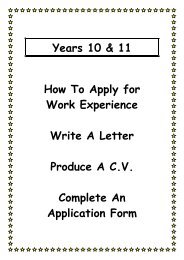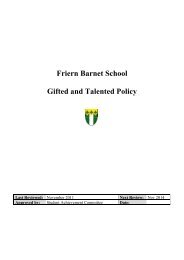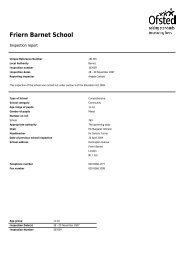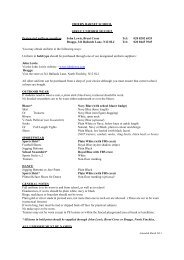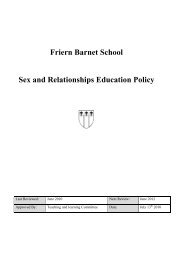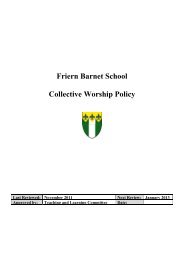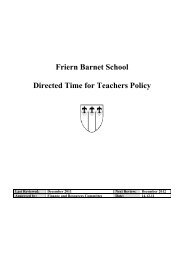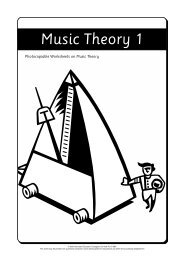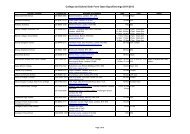VOL 166 Music Theory 2 - Friern Barnet School
VOL 166 Music Theory 2 - Friern Barnet School
VOL 166 Music Theory 2 - Friern Barnet School
You also want an ePaper? Increase the reach of your titles
YUMPU automatically turns print PDFs into web optimized ePapers that Google loves.
Name: ____________________ <strong>Music</strong> <strong>Theory</strong> 2 Worksheet<br />
WRITING FOR BRASS<br />
When writing for any instrument it is important to bear in mind the range of notes that can be<br />
played and that when writing at the very top or bottom of the range these notes can be quite<br />
difficult to produce. This might be fine for a professional musician but no good for a relative<br />
beginner!<br />
A complication in writing for Brass instruments is that the horn and trumpet are transposing<br />
instruments. This means that the note written is not the same pitch that the instrument sounds.<br />
<strong>Music</strong> for the F French horn is written in both treble and bass clef and is written a perfect fifth<br />
higher than it sounds.<br />
The trumpet is usually pitched in either C, B flat or A. If you are writing for a C trumpet you<br />
don’t need to transpose the notes. If writing for a B flat trumpet, which is the most common<br />
trumpet, then the notes are written a major second higher than they sound. If the trumpet<br />
sounds a B flat when playing the written note C the distance between what is written and what<br />
is heard is a major second so this is the interval of transposition.<br />
If writing for an A Trumpet you would write the music a minor third higher than it sounds because<br />
when the music says a C the instrument sounds the A a minor third below. If you don’t remember<br />
the transposition you will have major problems when the instrument comes to play with another<br />
instrument!<br />
Tuba pitch<br />
sounds as written<br />
B flat Trumpet pitch<br />
sounds a major second lower<br />
Trombone pitch<br />
sounds as written<br />
Horn in F pitch<br />
sounds a perfect fifth lower<br />
The tone on brass instruments can be altered by using<br />
a mute. The usual musical direction for indicating this<br />
is con sord. and senza cord. when you no longer<br />
want the mute to be used.<br />
Horn players sometimes insert their hand into the<br />
bell of the instrument to alter the sound and this is<br />
called stopping. It is indicated by a small + over the<br />
notes and then a to cancel it.<br />
o<br />
www.keynoteseducation.com © 2004 Keynotes Education Crossgate Cornwall PL15 9SX<br />
This sheet may be printed from a personal computer and/or photocopied for educational use within the purchasing establishment<br />
28




